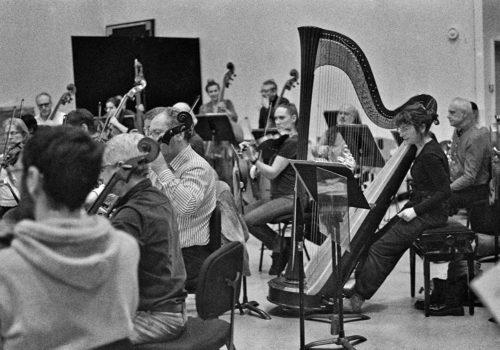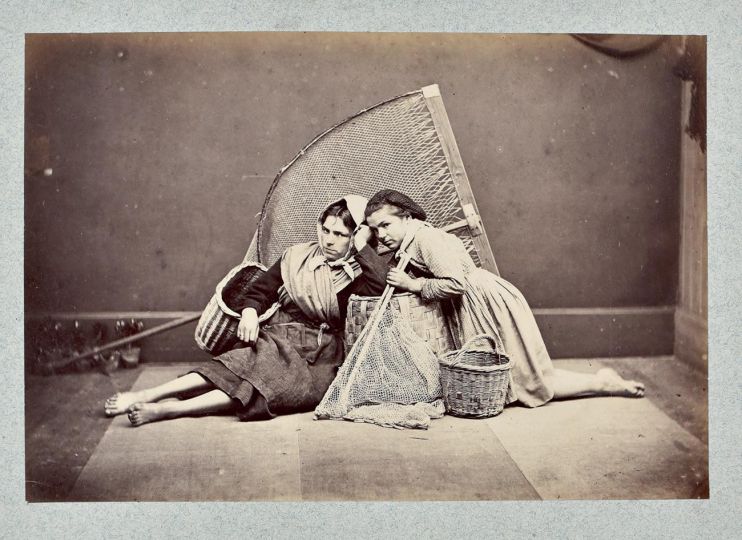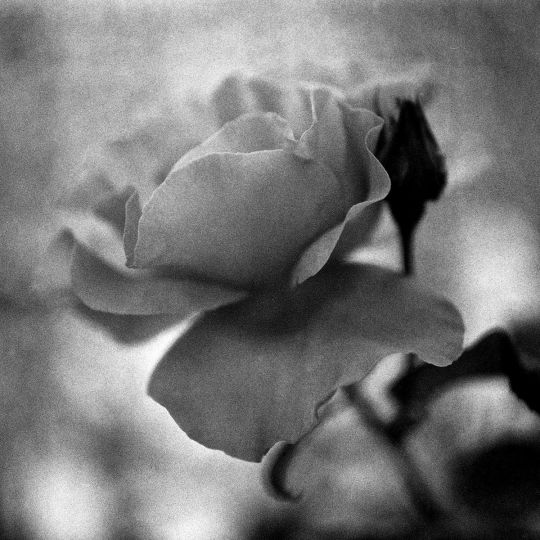Photographs from a series taken indoors and whose films of the same origin were developed in different alternative ecological developers.
After having developed black and white films in different ingredients, photographs of still lifes, flowers, various landscapes… I chose this time to approach reportage photography with the presence of characters in my images.
This type of shooting, practiced by many photographers, was essential to my experiences with the widest possible variety of images. Take pictures in more or less easy conditions, against the backdrop of technical requirements which will depend on the light sources and more generally on the lighting of a place.
To carry out this particular approach, I asked those responsible for the Dijon Burgundy Orchestra to be able to attend rehearsals of the orchestra composed for the occasion of sixty-six musicians. These musicians allowed me to photograph the rehearsals of an opera, La Tosca, for two days in a row.
Thus, I was able to move in the space of their repetition. Important detail, this large space did not have an opening allowing direct arrival of light on the sides, so for these shots I only benefited from vertical lighting coming from the ceiling, provided by a sort of light well.
From listening to taking pictures.
On the technical side itself, I took my photographs with a 35 mm format silver emulsion from Foma 400 ISO.
For these shots in indoor reporting conditions, I deliberately loaded film into three cameras that are very different in their mode of operation and use: a Nikkormat reflex camera, a Leica M2 camera, and a camera camera. from the great era of film, a Kodak Retina IV which had belonged to my father, a professional photographer.
Each body was equipped with a different chosen focal length: I had equipped my Nikkormat body with a 50 mm and from time to time with a variable focal length a 12/120, my Leica M2 was equipped with a 35mm and finally the Kodak Retina IV was operational with a wide angle, a 28 mm.
These three bodies allowed me to photograph differently, one with a reflex aiming and the other two with an optical viewfinder whose distance adjustment is carried out with an integrated rangefinder. Which will later allow the results obtained with each to be compared on the same subject.
Because of the arrival of light in average quantities, I had to operate at so-called slow speeds, of the order of 30th or 60th of a second, with an aperture opening which varied according to the plane ratios between f 2 .8 to f 5.6. My manual control light meter, like the cells integrated into the 3 boxes, were programmed at 400 ISO, all indicated to me the need to adjust my lenses to large apertures even though the musicians were not really moving, they were static and very focused.
But all the same, how can we avoid the risk of not capturing the right expressions at these slow speeds and ultimately only obtaining images that are not really sharp. The reality was there, without being able to stop beyond f 5.6, it was impossible here to increase the depth of field to gain sharpness. I therefore had to study my choices and the moments to operate before deciding to trigger to also save my films.
Over the course of two mornings and twice 3 hours spent with the musicians, I first took the time to watch them, to listen to them play in small successive sequences. These artist-musicians were led by Debora Waldman, associate conductor at the Dijon Opera since 2022 and also at the head since 2019, of the Avignon-Provence National Orchestra, the first woman in France to hold a position of conductor.
After a long time of observing everything, I began to choose my different shots and framing of musicians, I triggered as discreetly as possible at suitable moments. The shutter of each of my three cameras was not on the same pitch! The Nikkormat turned out to be the noisiest of the three with, when it clicked, the raising of its mirror, the Leica M2 was the quietest of the three, very useful for taking close-up shots, finally the Kodak Retina presented itself as moderately quiet.
I had to play my role as a privileged observer as best as possible, feel the moment of the trigger, take into account my movements during changes of axes, as well as the intensity of certain musical movements. Be as discreet as possible in front of everyone…but it’s never easy!
The revelation and the silver rendering!
I also had to think about the future and the development of the films exposed in my alternative developers?…I’m coming to that.
My big question was constantly the role of light and its consequences on the results that I was already expecting. Was ISO 400 film enough? Because increasing sensitivity, how at this stage can I imagine it scientifically and actually in my alternative developers?
With diffuse and medium lighting coming only from the ceiling as well as with necessarily very open diaphragms, how should I later adapt to my films and ecological mixtures, the right temperature and sufficient development time in each of the developers that I use? were going to use for this “first!” revealing to coffee, to wine from a hybrid grape variety Baco, then to wine made from a Pinot noir grape variety typical and emblematic of Burgundy, but also to green tea then to black tea, used alone or mixed?
Also, as a necessary witness, images of the same film allowing comparison, developed in traditional chemistry, here a concentrated HC 110 developer from Kodak?
Many questions that I would have to answer once I arrived in my little dark room.
Finally, for each alternative developer manufactured, I decided to program the same temperatures and development times obtained during my multiple tests, all indicated in my sheets / recipes previously published here, in the Eye of Photography.
Why should I have decided otherwise, knowing that scientifically I did not have at my disposal the tools necessary for precise and learned calculations in sensitometry.
I simply wanted to find in this reportage good results, identical to those that I obtained during my numerous tests totalized over a year, and thus allow as many people as possible or those who, one day, would like to, to try the alternative experience.
Here are some images of different moments captured during this immersive reportage.
Thank you to the musicians of the Dijon Burgundy Orchestra who allowed me to advance my research.
https://www.orchestredijonbourgogne.fr
Jacques Revon
Honorary journalist, author, photographer.
https://fr.wikipedia.org/wiki/Jacques_Revon
















